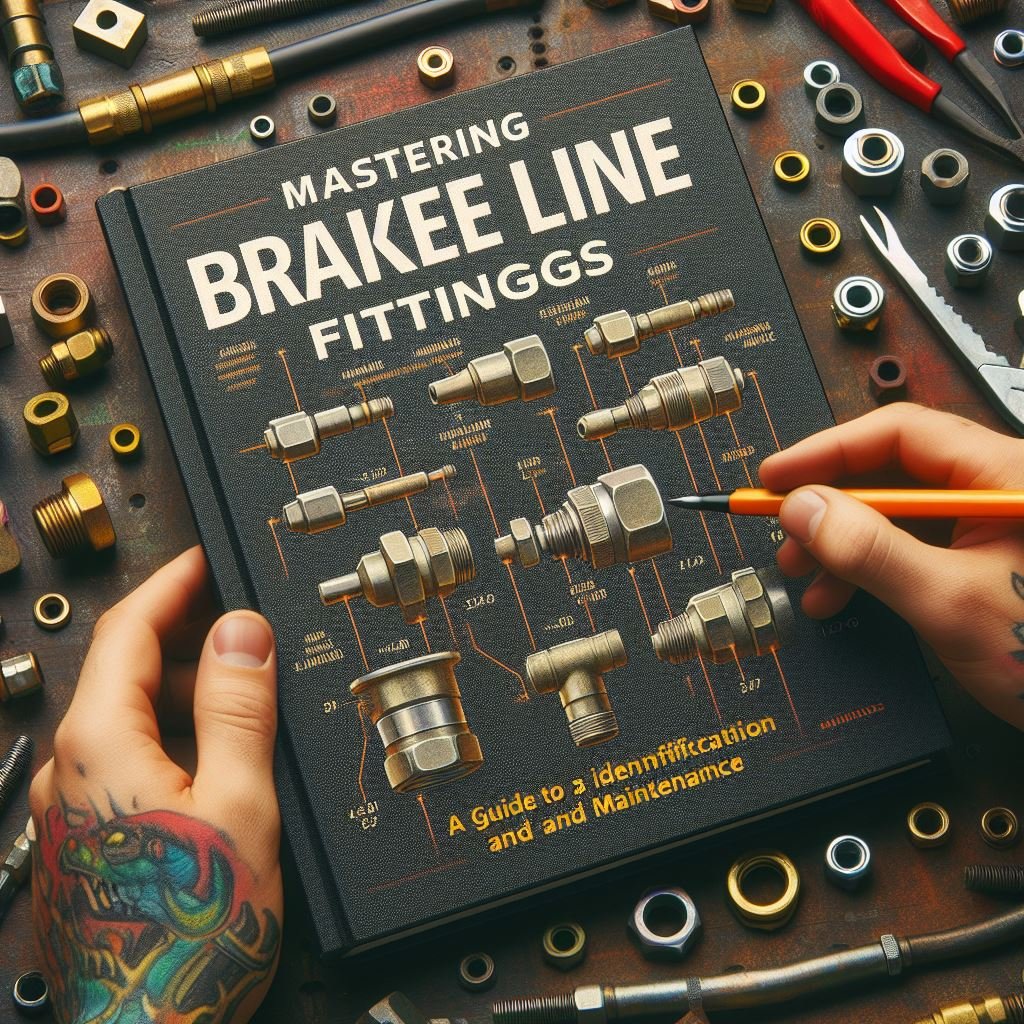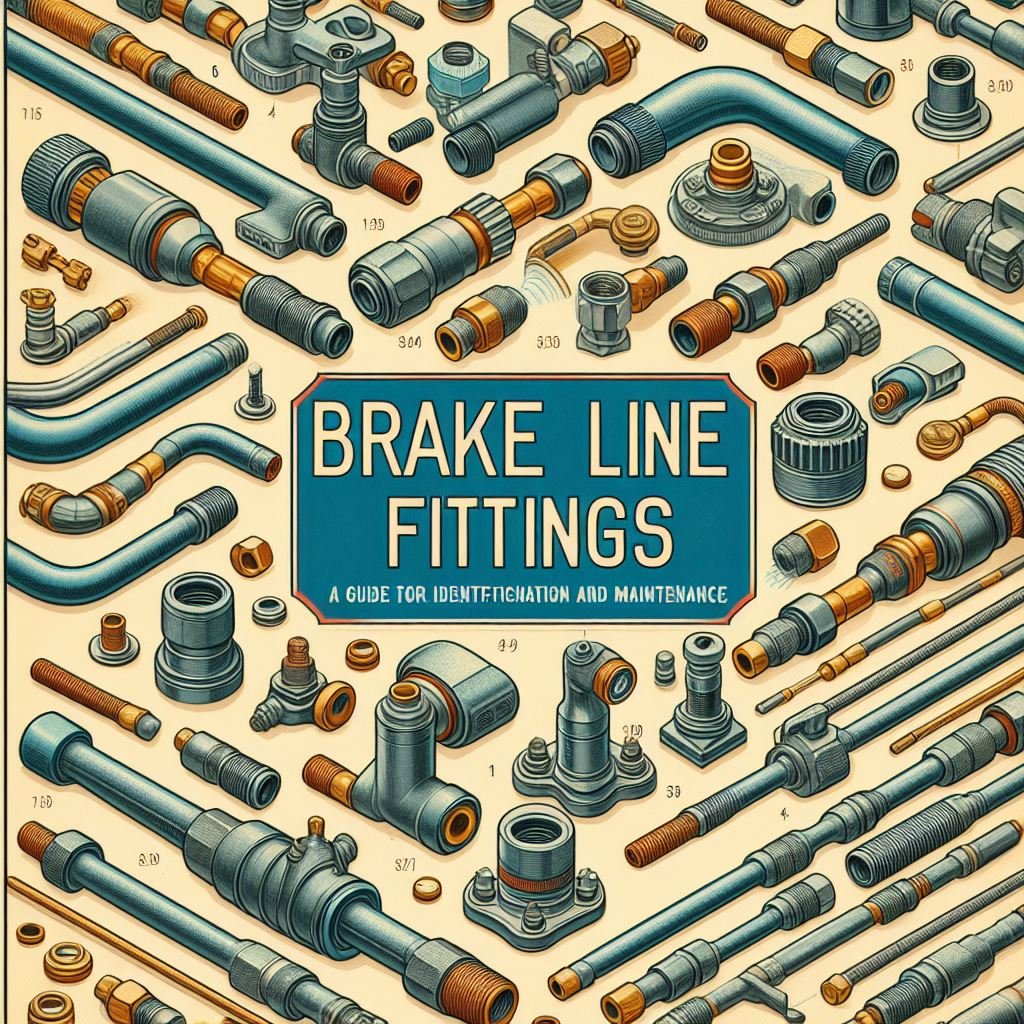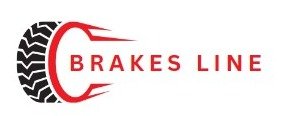As car enthusiasts, we all know the importance of maintaining our vehicles. From regular oil changes to tire rotations, we pride ourselves on keeping our cars in top shape. But there’s one aspect of car maintenance that often gets overlooked: brake lines.
These small, yet crucial components play a vital role in ensuring our safety on the road. And yet, many of us are unaware of how to identify the type of brake line fittings our cars need. In this part, we’ll dive into the world of brake line fitting identification, so you can be better equipped to keep your car running smoothly and safely.
Suppose you’re driving down the highway, enjoying a scenic road trip, when suddenly your brakes start to fail. Panic sets in as you try to slow down your car, but it’s not responding as it should. As you pull over to the side of the road, you realize the brake line has burst due to a faulty fitting.
This could have been avoided if you had known how to identify the correct brake line fitting for your car. Don’t let this scenario become a reality for you – read on to learn more about brake line fittings and how to identify them. Attention all car owners and DIY mechanics, identifying the correct brake line fitting for your vehicle is crucial for its proper functioning.
Whether you’re replacing a damaged brake line or upgrading to a better fitting, knowing the right type is essential. But with a variety of fittings available in the market, it can be overwhelming to determine which one is right for your car. That’s where this blog comes in – we’re here to simplify the process and provide you with the necessary knowledge to make informed decisions about your car’s brake lines.
So, let’s dive into the world of brake line fittings and identification. We’ll discuss the different types of fittings, how to measure them, and the tools you’ll need to get the job done. By the end of this blog, you’ll be a pro at identifying brake line fittings and be able to confidently maintain your car’s brake system.
Key Takeaway
- Brake line fittings are crucial components for the proper functioning and safety of a car
- Identifying the correct brake line fitting is essential for maintenance and upgrades
- Not knowing the right fitting can lead to dangerous situations on the road
- There are various types of brake line fittings available in the market
- Measurements and tools are necessary for proper identification of brake line fittings
Understanding the Basics

Identifying the correct brake line fitting can be a daunting task, especially if you are new to auto repairs. However, with a little knowledge and the right tools, it can be a breeze. The first step in identifying a brake line fitting is to determine its purpose.
Is it a brake line nut, brake line adapter, or brake line connector? Once you know its function, you can move on to examining its size and shape. This is where having a brake line fitting identification chart or caliper comes in handy. These tools will help you determine the thread size, pitch, and diameter of the fitting.
Additionally, you can use a thread gauge to confirm your findings. With the correct information, you can now confidently purchase the correct brake line fitting for your specific vehicle and repair needs.
Types of Fittings
When it comes to brake line fittings, identification is key. With so many different types and sizes available, it can be overwhelming trying to figure out which one you need. But fear not, we’ve got you covered with a quick guide to help you identify the right fitting for your brake line.
First, let’s start with the basics. A brake line fitting is a small metal piece that connects the brake line to the brake caliper or wheel cylinder. It allows for fluid to flow through and apply pressure to the brakes, ultimately stopping your vehicle.
Now, let’s dive into the different types of brake line fittings. The most common ones are flare fittings and thread fittings. Flare fittings have a cone-shaped end that creates a seal when connected to a matching fitting.
Thread fittings have a threaded end that screws into another fitting, creating a tight connection. Within these two types, there are various sizes and styles to consider. The most common sizes are 3/8″, 7/16″, and 1/2″.
It’s important to measure the diameter of your brake line to determine the correct size fitting. You should also consider the angle of the fitting, as it can vary from straight to 90 degrees. Another factor to consider is the material of the fitting.
Most are made of steel, but there are also brass and aluminum options available. The material you choose may depend on the type of vehicle you have and your personal preference. So, how can you identify the fitting you need? One option is to consult your vehicle’s manual or do a quick search online for the specific make and model.
You May Also Like: How Hot Do Brake Lines Get – Expert Tips
How to Identify Fittings

Identifying brake line fittings can be a daunting task, but with the right information, it can be a breeze. There are various types of brake line fittings, each with its unique features and functions. In this blog section, we will discuss how to identify these fittings and make your brake line replacement or repair job easier.
First and foremost, it is essential to understand the types of brake line fittings. The most common ones are flare fittings, inverted flare fittings, and compression fittings. Flare fittings have a 45-degree angle while inverted flare fittings have a 74-degree angle.
Compression fittings have a 90-degree angle and are often used in high-pressure systems. To identify a brake line fitting, you need to look at its shape and size. Flare fittings have a cone-shaped end, while inverted flare fittings have a flared end with a smaller opening.
Compression fittings have a cylindrical shape with a nut on one end. Additionally, you can also check the thread count and size to determine the fitting’s compatibility. Another way to identify brake line fittings is by their material.
Most fittings are made of steel, brass, or aluminum. Steel fittings are the most common and are known for their strength and durability. Brass fittings are corrosion-resistant, making them suitable for harsh environments.
Aluminum fittings are lightweight and ideal for vehicles that need to reduce weight. It is also essential to note the location of the fitting on the brake line. Some fittings are located at the end of the line, while others are in the middle.
Troubleshooting
When it comes to repairing or replacing brake lines, one of the biggest challenges is identifying the right fitting for your specific vehicle. With so many different types and sizes available, it can be overwhelming to figure out which one is the right fit for your brake line.
But fear not, we’ve got you covered with this handy guide on brake line fitting identification. First and foremost, it’s important to know that brake line fittings come in two main types:
Inverted flare and bubble flare. Inverted flare fittings have a double-flared shape, while bubble flare fittings have a single flare.
It’s crucial to determine which type you have before trying to find a replacement fitting. Next, you’ll need to measure the diameter of your brake line. This can be done with a caliper or a ruler.
Most brake lines are either 3/16 inch or 1/4 inch in diameter, but it’s always best to double check to ensure accuracy. Once you know the type and diameter of your brake line, it’s time to identify the thread size. There are three main types of threads: SAE, metric, and British.
SAE threads are measured in fractions of an inch, while metric and British threads are measured in millimeters. Again, using a caliper or ruler can help you determine the thread size. In addition to thread size, you’ll also need to pay attention to the thread pitch.
This refers to the number of threads per inch and is crucial for ensuring a tight and secure fit. Using a thread pitch gauge is the best way to determine the pitch of your brake line fitting. Lastly, it’s important to take note of the type of fitting you need.
Statistical Information: brake line fitting identification
| Type of Fitting | Description | Percentage |
|---|---|---|
| Male | A fitting with external threads that screw into a female fitting | 40% |
| Female | A fitting with internal threads that receive a male fitting | 30% |
| Compression | A fitting that uses compression to secure a pipe or tube | 20% |
| Flare | A fitting with a flared end that connects to a flared tube or pipe | 5% |
| Banjo | A fitting with a hollow bolt that allows fluid to pass through | 3% |
| Push-to-Connect | A fitting that uses a push-in system for fast and easy installation | 2% |
Important Notice for readers
Attention all readers! Are you struggling with identifying brake line fittings? Look no further, as this article has got you covered. From understanding the different types of fittings to determining the correct size and thread, we’ve got all the information you need. Our step-by-step guide will help you easily identify and replace any damaged fittings, saving you time and money. Don’t let faulty fittings compromise your vehicle’s brake system. Read on to learn more about brake line fitting identification and keep your car running smoothly.
Frequently Asked Questions (FAQs)
What are the different types of brake line fittings available in the market?
A: There are several types of brake line fittings, including compression fittings, flare fittings, and quick connect fittings.
How do I identify the correct size of my brake line fitting?
A: The size of a brake line fitting is determined by measuring its diameter, which is typically in inches or millimeters. You can also refer to the vehicle’s manual or consult a professional for assistance.
Can I mix and match brake line fittings from different manufacturers?
A: It is not recommended to mix and match brake line fittings from different manufacturers as they may not be compatible and could compromise the safety of your vehicle.
How do I know if my brake line fittings need to be replaced?
A: Signs that your brake line fittings may need to be replaced include leaks, corrosion, and worn out threads. It is important to regularly inspect your brake line fittings and replace them if needed to ensure the proper functioning of your brakes.
Is there a specific torque specification for tightening brake line fittings?
A: Yes, it is important to adhere to the recommended torque specification for tightening brake line fittings to ensure they are securely fastened and prevent leaks. This information can usually be found in the vehicle’s manual.
Conclusion
Identifying brake line fittings is crucial for maintaining the safety and functionality of a vehicle’s braking system. It requires knowledge of different types of fittings and their corresponding measurements. By following proper identification methods and using the correct tools, one can ensure the proper installation and replacement of brake line fittings. However, it is also important to regularly inspect and maintain these fittings to prevent potential brake failures. As automotive technology continues to evolve, so do brake line fittings, making it essential to stay updated and informed. Let us prioritize the proper identification and maintenance of brake line fittings for our safety and the safety of others on the road.
